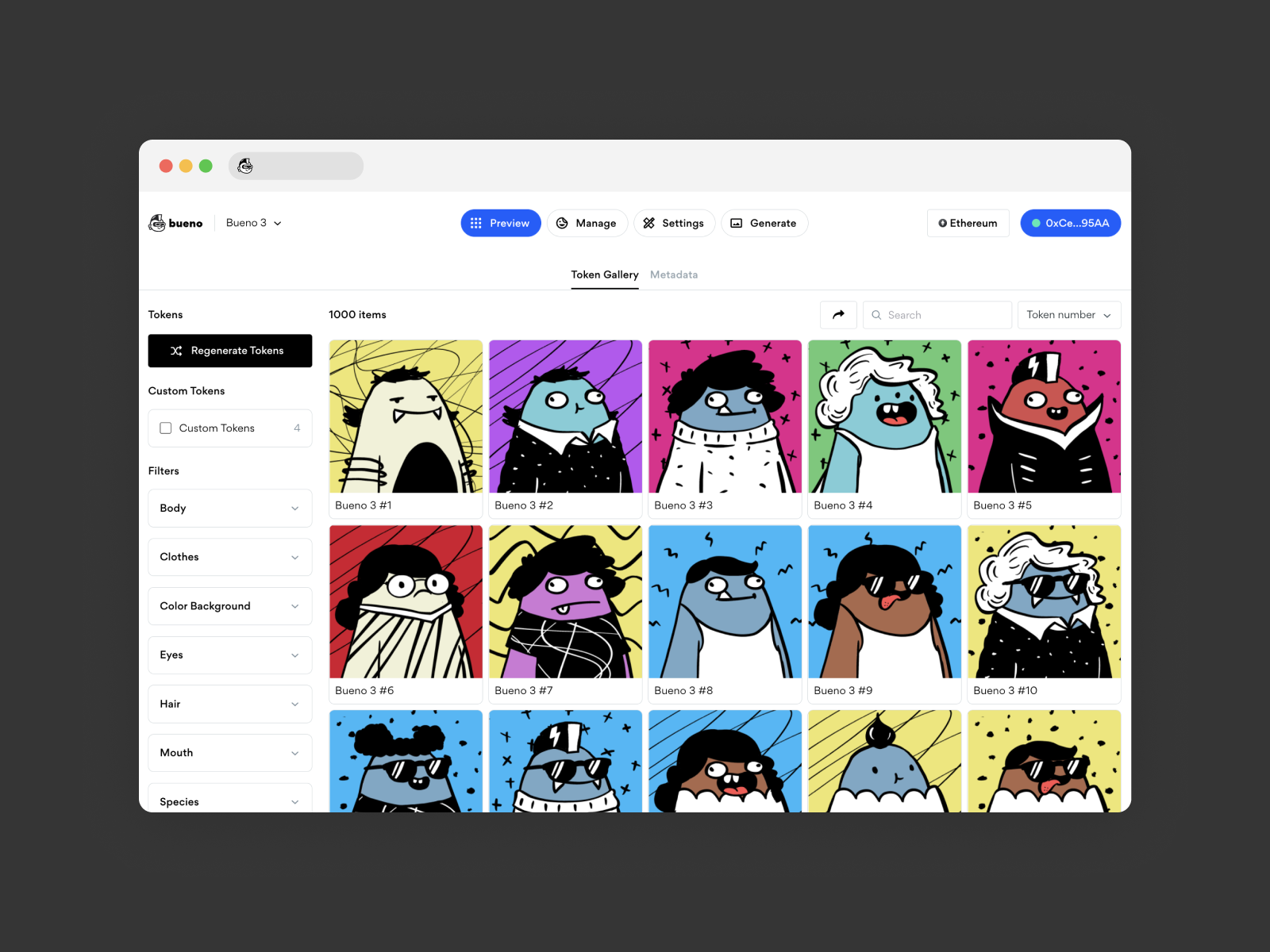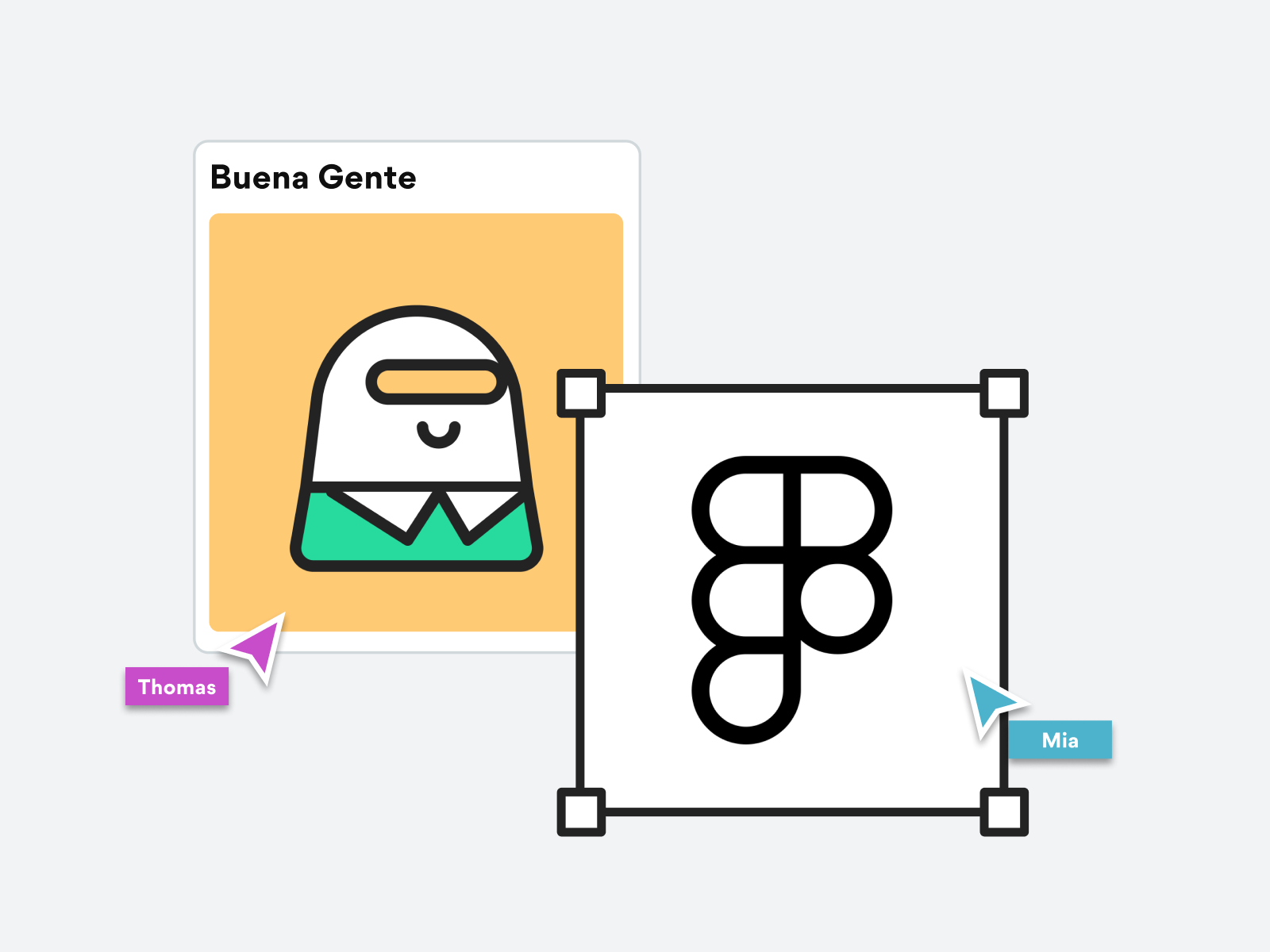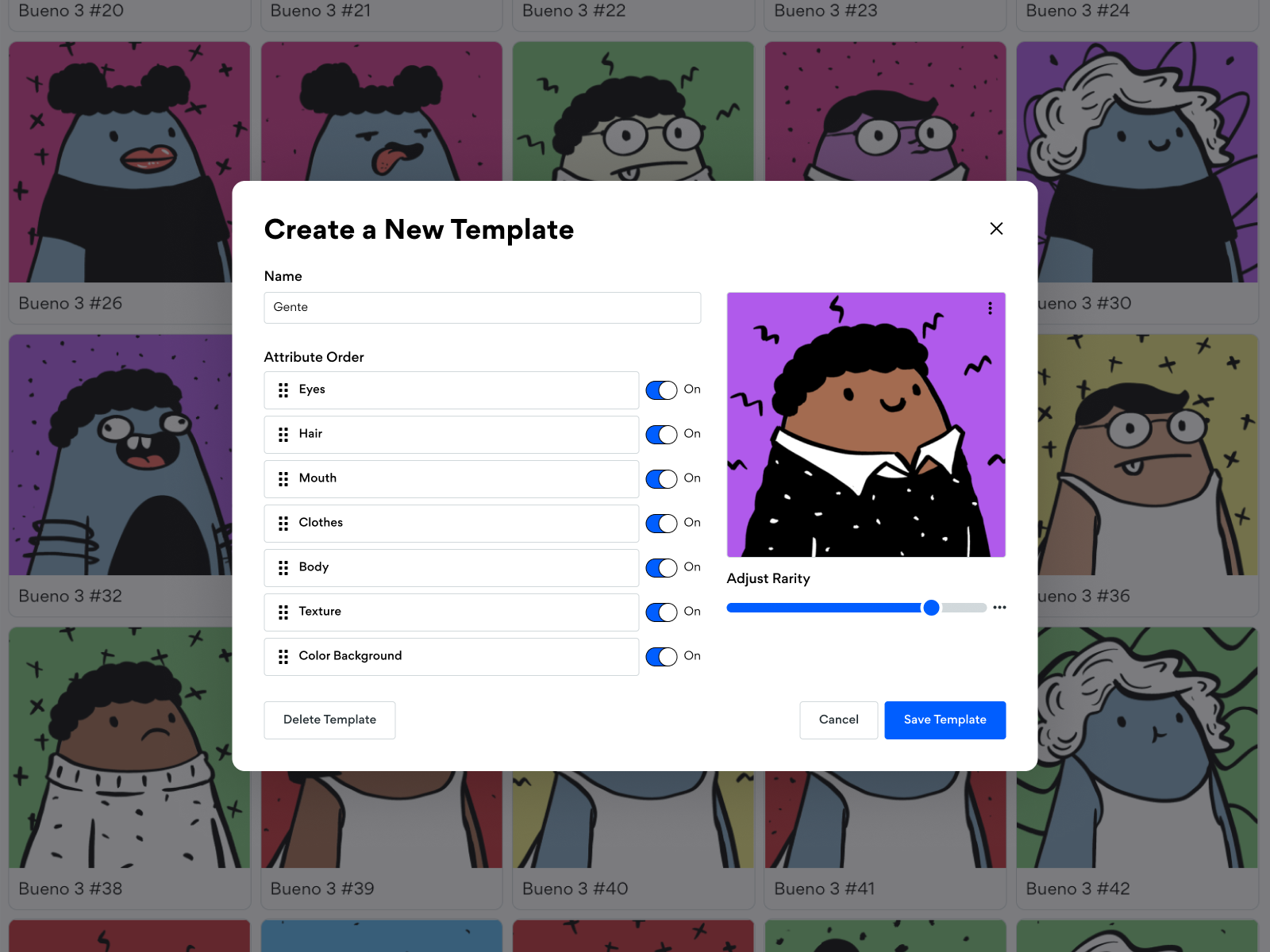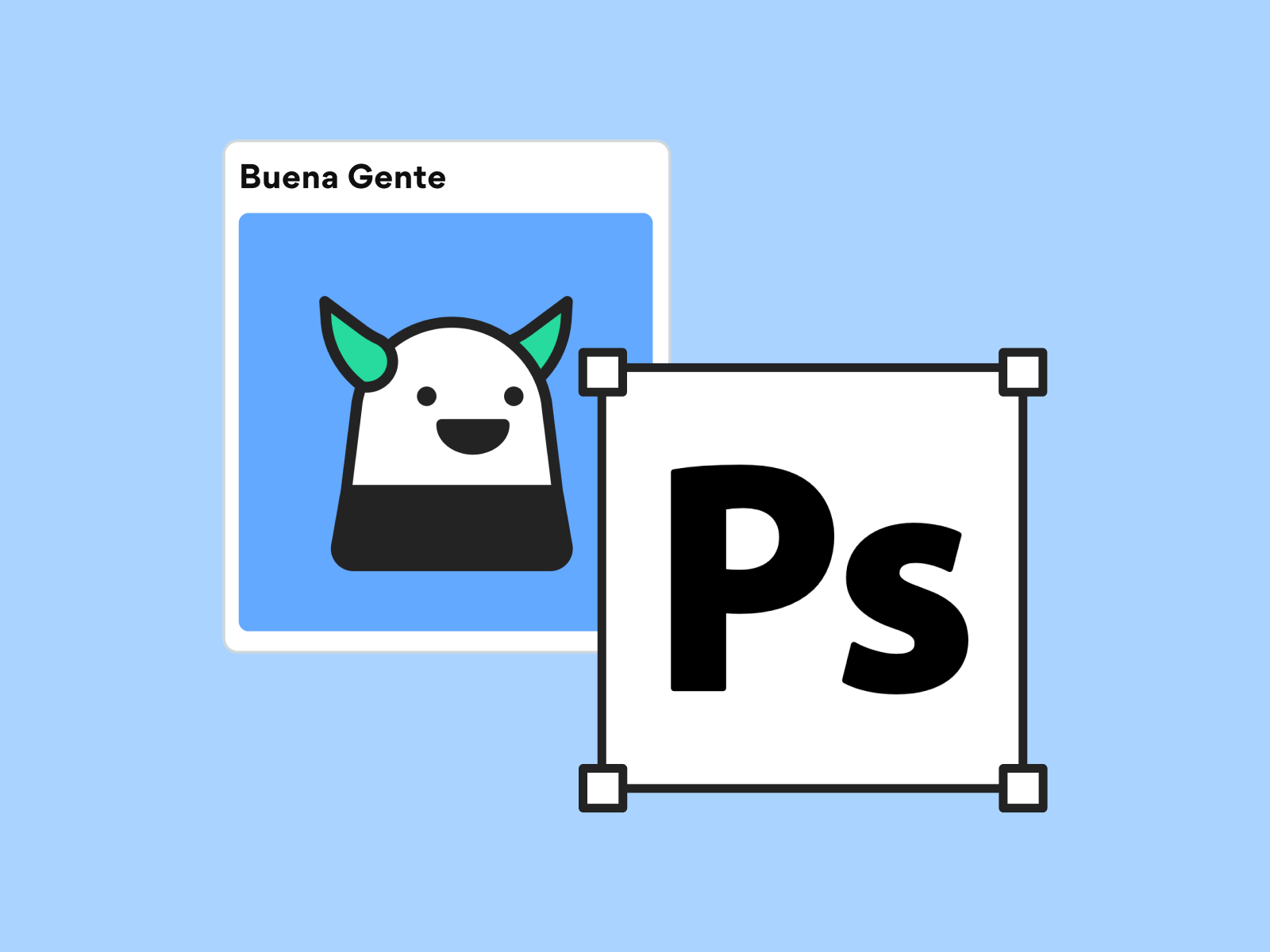
Mastering Rules in Bueno
Rules are great for simple, straight forward pairing requirements. We suggest rules for when you just need a few attributes to behave a particular way together. Before creating a complex set of rules, you should first consider if templates or tags may suit your needs better.
With that said, let’s take a deep dive into rules! For our examples, we will work with the Bueno Gente. 🎉
Doesn’t Mix With
Let’s begin with the most straightforward rule. Doesn’t mix with prevents a selected trait from ever appearing with another selected trait. This rule is bidirectional - that means it works both ways!
Example:
Problem: In the Bueno Gente collection, we have a body color and a background color that are a little too similar - Purple and Blurple.

To make sure our tokens look good and have color contrast, we don’t want the purple bodies to ever mix with the blurple background. Time to make a rule!
Rule: Purple Body doesn’t mix with Blurple Background.

Result: Whenever Blurple Background appears in a token, Purple Body will never appear in that token.

Likewise, whenever Purple Body appears, Blurple Background will never appear.

Only Mixes With
Our next rule is a little more tricky. Only mixes with works when you would like a selected trait only to appear when another selected trait appears.
The only mixes with rule is unidirectional, and only works one way - from left to right! So, just because trait x only mixes with trait y, that doesn’t mean that y only mixes with trait x. Any other trait options in your trait pool can still mix with y.
Example:
Problem: Let’s say we still aren’t satisfied with the color contrast between the purple body and most of the other background colors. So, we’d like to see the purple bodies only with green or yellow backgrounds so they really pop.
Rule: Purple Body only mixes with Yellow Background and Green Background.

Result: Whenever Purple Body appears in a token, it will be paired with Green Background or Yellow Background.

However, whenever Green Background appears in a token, it doesn’t always need to be paired with Purple Body. It can still appear with any color body! The same goes with Yellow.

Always Pairs With (In Beta)
Always pairs with is our newest rule. This rule ensures that traits always appear together, and never separate. You can think of it as kind of the opposite of our doesn’t mix with rule. Much like that rule, the always pairs with rule is bidirectional, and works both ways.
Example:
Problem: As we are working with our Bueno Gente tokens, we finally decide that we want something like our previous rule, only more strict. We only want to see green and yellow backgrounds when we have a purple body in a token.
Rule: Purple Body always pairs with Yellow Background and Green Background.

Result: Whenever a purple body appears, the background will either be yellow or green, and nothing else.

Likewise, No other body colors besides purple will be paired with yellow or green backgrounds.

Pairing and Trait Probability
If a trait is paired to another, then the chance of it getting picked is equal to the rarity of either traits getting picked. As a result, a trait that has a low rarity % (very rare) may become more common (less rare) if it has been paired with a trait of higher rarity.
This is basic probability at work when there are two events that are not mutually exclusive. This means that the overall rarity of your paired traits in your token set equals the probability of both traits combined (Trait A + Trait B) minus the probability of both showing up together (Trait A x Trait B).
If this seems a bit complicated, we can brush up on probability together!
Example:
Let’s say we set Purple Body rarity at 2% (rare), and Yellow Background rarity at 20% (common). Then, we tell Bueno to always pair those 2 traits.
Problem: Out of a token set of 100, about how many tokens will have both traits? We can estimate by using — you guessed it — math!
We will be using the simple formula (A+B) - (AxB) = overall rarity
.02 + .20 = .22
.02 x .20 = .004
.22-.004 = .216
.216 = 21.6%
Solution: The overall rarity of the traits is 21.6%, so we should have about 21 or 22 tokens with these paired traits in a set of 100 total tokens.
Note on Fixed Quantity Trait Pairings: If any of the traits has a fixed quantity, then paired traits will be limited to the lowest fixed value.
Troubleshooting Rules
If your tokens are failing to generate or you notice rules aren’t behaving then we have some things you can do to help isolate the problem.
First, check your rules.
You can use our rule analysis (Manage > Rules > Analyze Rules) tool to make sure you don’t have any conflicting rules. It’s very easy to create rules that conflict, but we try our best to find these for you!
You can also try removing rules one at a time to find which one is causing the generation to fail. You can always re-add it after.
Check your templates.
If you’re using fixed trait or template quantities then make sure you have allocated enough traits. A template will not be used if it cannot satisfy always pairs with rules.
Check trait rarity.
Trait rarity also plays an important role. If your traits are too rare, or you have the overall attribute rarity set less than 100%, it’s possible the generator will never pick your traits.
Getting more help
If you’re still stuck, please reach out to our support channel (https://discord.gg/9BY2fS2D39) with a link to your collection and a description of what’s going wrong.


















